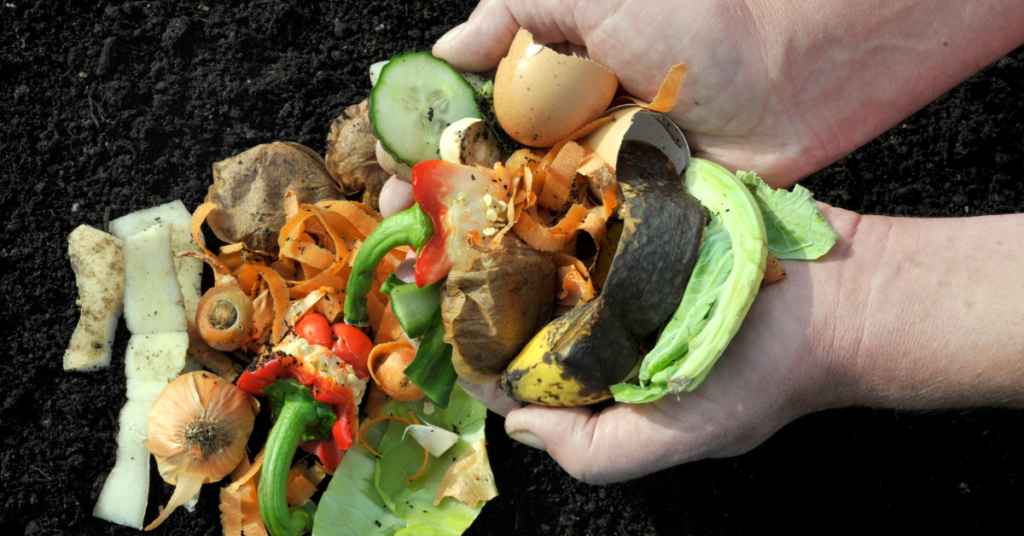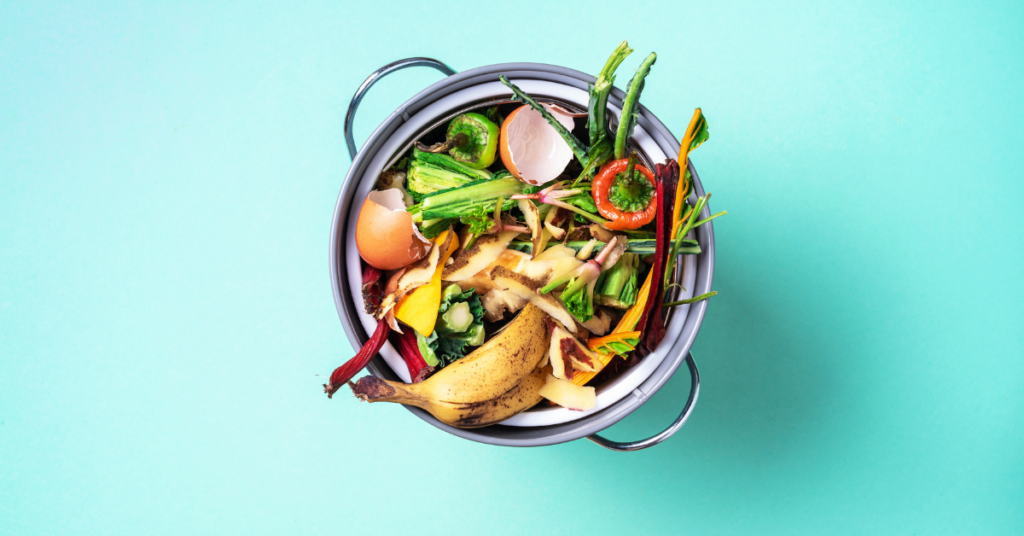Welcome to our comprehensive guide on bokashi composting, the efficient and eco-friendly method of managing organic waste. With bokashi composting, we can take control of our kitchen scraps and other organic materials, turning them into nutrient-rich compost that enriches our soil. This innovative method is particularly beneficial for indoor composting, making it perfect for those living in urban areas or with limited outdoor space.
By utilizing a process called microbial fermentation, bokashi composting breaks down organic waste quickly and without any foul odors or pests. It’s a convenient and space-saving solution that allows us to contribute to a more sustainable and environmentally-friendly lifestyle.
In this article, we will guide you through the process of mastering bokashi composting, explain the science behind it, and highlight the advantages you can’t ignore. Let’s dive in and unlock the full potential of bokashi composting for efficient organic waste management!
For More Information On The different Types of Composting Read This Blog Post. Different Types Of Compost To Enrich Your Soil

Mastering Bokashi Composting
In order to successfully master bokashi composting, we need to understand the key components and steps involved. First and foremost, you will need a bokashi bucket or container with an airtight lid. This container will create the ideal environment for the fermentation process to occur without any oxygen entering.
The next crucial element is the bokashi bran, a mixture of beneficial microorganisms that kickstart the fermentation process. It is important to layer your kitchen scraps with a sprinkling of bokashi bran in the bucket, ensuring each layer is pressed down to remove excess air. Repeat this process until the bucket is full, ensuring it is tightly sealed.
For the next two weeks, the tightly sealed bucket needs to be left to ferment. During this fermentation period, you may notice a slight pickle-like odor, which is completely normal. Once the fermentation is complete, the contents of the bucket can be buried in the soil or added to a traditional compost pile to complete the decomposition process.
Mastering Bokashi Composting: Step-by-Step Guide
- Acquire a bokashi bucket or container with an airtight lid.
- Obtain bokashi bran, a mixture of beneficial microorganisms.
- Layer kitchen scraps with bokashi bran, pressing down to remove excess air.
- Repeat until the bucket is full, ensuring it is tightly sealed.
- Leave the bucket to ferment for approximately two weeks.
- Buried the fermented contents in the soil or add to a traditional compost pile.
| Advantages of Bokashi Composting |
|---|
| Efficient indoor composting method |
| Accepts a wider range of organic materials |
| Produces nutrient-rich compost for soil enrichment |
| Eliminates foul odors and reduces pest attraction |
The Science Behind Bokashi Composting
Bokashi composting is a unique and efficient method of composting that relies on fermentation rather than traditional aerobic decomposition. This process involves the addition of a special mixture called bokashi bran, which introduces beneficial microorganisms into the organic waste. These microorganisms thrive in an anaerobic environment, breaking down the organic matter through fermentation.
The fermentation process produces lactic acid and other beneficial metabolites, creating an acidic environment that inhibits the growth of harmful bacteria and pathogens. This results in a safer end product, free from harmful pathogens. Additionally, bokashi composting allows for the breakdown of a wider range of organic materials, including dairy, meat, and cooked foods, which are typically discouraged in traditional composting methods.
The role of microorganisms in the fermentation process
In the world of Bokashi composting, microorganisms play a pivotal role in breaking down organic matter through fermentation. Specifically, this method utilizes a diverse community of beneficial microorganisms known as Effective Microorganisms (EM).
These EM consist of various bacteria, yeasts, and fungi that work together harmoniously to decompose the organic waste material. During the fermentation process, these microorganisms rapidly multiply and produce an array of enzymes and organic acids.
The enzymes secreted by these microbes serve to break down complex compounds into simpler forms that are readily absorbed by plants. Additionally, the organic acids produced help to lower the pH level within the composting system, creating an acidic environment that further aids decomposition.
How anaerobic conditions enhance decomposition
Unlike traditional aerobic composting methods that rely on oxygen-rich environments to facilitate decay, Bokashi composting thrives under anaerobic conditions. Anaerobic processes occur in environments devoid of oxygen or with limited oxygen availability.
This unique characteristic sets Bokashi composting apart from other composting techniques. Anaerobic conditions create an environment highly conducive to the growth and activity of specific groups of microorganisms involved in fermentation.
These anaerobes thrive in low-oxygen settings and are capable of breaking down organic matter more efficiently compared to their aerobic counterparts. By eliminating oxygen from the equation, anaerobic decomposition helps retain valuable nutrients present within the waste material while reducing unpleasant odors associated with aerobic degradation.
Comparison with traditional aerobic composting methods
When comparing Bokashi composting with traditional aerobic methods such as backyard composting or vermicomposting (composting using worms), several key differences emerge. Firstly, Bokashi composting operates at a faster pace, allowing for quicker breakdown of organic material. While traditional composting methods can take months to yield usable compost, Bokashi fermentation usually completes within a few weeks.
Another notable distinction lies in the types of organic waste materials suitable for each method. Bokashi composting readily accepts a wider range of materials, including meat, dairy products, and cooked food scraps.
In contrast, traditional aerobic methods often require exclusion of these items due to potential odor and pest concerns. Moreover, Bokashi composting offers the advantage of being compact and suitable for indoor use.
Unlike outdoor compost piles or worm bins that may be limited by space or weather conditions, Bokashi systems can be easily accommodated within small apartments or homes without any foul odors escaping into living areas. Overall, understanding the scientific principles behind Bokashi composting sheds light on its distinct advantages over traditional aerobic methods while emphasizing the vital role microorganisms and anaerobic conditions play in maximizing decomposition efficiency.
Choosing the Right Container for Fermenting Organic Waste
When it comes to Bokashi composting, selecting the appropriate container plays a vital role in ensuring successful fermentation of organic waste. There are several options available, each with its own advantages and considerations.
The three main choices are buckets, bins, or specialized Bokashi systems. Buckets are a popular choice for beginners due to their simplicity and affordability.
A sturdy plastic bucket with a tight-fitting lid can work effectively for small-scale Bokashi composting. However, ensure that the bucket is made of food-grade plastic to prevent any harmful chemicals from leaching into your compost.
Additionally, consider the size of the bucket based on your organic waste production and available space. Bins provide a larger capacity for those with more significant amounts of organic waste or those who require a longer fermentation period between batches.
Look for bins specifically designed for Bokashi composting as they often have features such as drainage spigots and air-tight seals to enable easy management of anaerobic conditions. If you’re looking for a more streamlined approach, specialized Bokashi systems may be worth considering.
These systems typically consist of multiple compartments that allow you to continuously add organic waste while simultaneously fermenting previous batches. This design maximizes efficiency and ensures a steady supply of nutrient-rich compost over time.
Factors to Consider: Size, Material, and Drainage System
In addition to choosing between buckets, bins, or specialized systems, there are other factors that should be considered when selecting a container for Bokashi composting. Size: The size of the container should align with the amount of organic waste you generate on a regular basis.
If you produce smaller quantities of kitchen scraps or live in an apartment setting with limited space, a smaller container may be sufficient. However, for larger households or those who generate significant amounts of waste, choose a container with a larger capacity to accommodate the volume.
Material: Opt for containers made from durable materials that are resistant to corrosion and easy to clean. Food-grade plastic is commonly used and widely available.
Avoid containers made from materials that may react with acidic waste, such as certain metals or low-quality plastics. Drainage System: Some containers have built-in drainage systems that allow you to collect any excess liquid produced during fermentation.
This liquid, known as “Bokashi tea,” is rich in nutrients and can be used as a liquid fertilizer for your plants. If utilizing this feature is important to you, select a container with a convenient drainage mechanism.
Preparing the Bokashi Bran or EM (Effective Microorganisms)
The cornerstone of Bokashi composting lies in the preparation of the Bokashi Bran or EM, which introduces beneficial microorganisms into the fermentation process. This mixture enhances decomposition and initiates the production of rich organic matter.
Creating your own homemade EM is relatively simple and cost-effective. The ingredients required for making Bokashi Bran are bran (such as wheat bran or rice bran), molasses (or another suitable sugar source), water, and beneficial microorganisms.
The most commonly used microorganisms in homemade EM are lactobacillus bacteria and yeasts. To prepare homemade EM, begin by mixing bran with warm water until it reaches a moist consistency throughout but does not become overly saturated.
Next, add molasses or another sugar source to provide food for the microorganisms during fermentation. The quantity of molasses should not exceed 10% by weight relative to the bran used.
Inoculate this mixture with beneficial microorganisms, which can be sourced from previous Bokashi batches or obtained from specialized suppliers. Ensure that the microorganisms are evenly distributed throughout the mixture.
Once prepared, spread the mixture on a tray or container and allow it to ferment in a dark and warm environment for approximately one week, stirring occasionally. After this fermentation period, the Bokashi Bran is ready to be used for efficient composting.
Bokashi composting utilizes the power of beneficial microorganisms to efficiently break down organic waste through fermentation, creating a nutrient-rich compost that is safe and easy to use.
In summary, this type of composting offers a scientifically proven and efficient approach to composting organic waste. By harnessing the power of fermentation and beneficial microorganisms, bokashi composting provides a safe and convenient solution for efficient waste management and soil enrichment.

Starting Your Bokashi Composting Journey
If you’re looking for an effective way to recycle your kitchen scraps and enrich your soil, bokashi composting is the perfect solution. With this eco-friendly method, you can turn your organic waste into nutrient-rich compost without the hassle of traditional composting. Here’s how to get started on your bokashi composting journey:
1. Collecting Kitchen Scraps: Gather your kitchen scraps such as vegetable peelings, coffee grounds, and eggshells. Avoid including dairy, oily foods, and large pieces of meat, as they may slow down the fermentation process.
2. Layering with Bokashi Bran: In your bokashi bucket, layer the kitchen scraps with a sprinkling of bokashi bran. Press down to remove excess air and repeat this process until the bucket is full. It’s important to seal the lid tightly to create an airtight environment for fermentation.
3. Draining and Using Bokashi Tea: During the fermentation period, remember to drain the excess liquid, known as bokashi tea, every few days. Dilute the tea with water and use it as a nutrient-rich liquid fertilizer for your plants.
Why Choose Bokashi Composting?
“Bokashi composting allows you to recycle a wider range of organic materials while eliminating foul odors and pests.”
- It is an efficient method of composting that utilizes fermentation to break down organic waste.
- The fermentation process creates an acidic environment that inhibits the growth of harmful bacteria and pathogens.
- Bokashi composting accepts a wider range of organic materials, including dairy, meat, and cooked foods.
- This method of composting is space-saving and can be easily implemented indoors.
- The nutrient-rich compost produced through bokashi composting improves soil health and fertility.
- Bokashi composting eliminates foul odors and reduces the attraction of pests.
Bokashi composting offers several advantages over traditional composting methods. Not only does it accept a wider range of organic materials, including dairy, meat, and cooked foods, but it also reduces waste going to the landfill and greenhouse gas emissions. Additionally, this type of composting produces nutrient-rich compost that enhances soil health and fertility, promoting healthier plant growth. Another benefit of this method is that it eliminates foul odors and reduces the attraction of pests, making it a more pleasant and hygienic composting option.
| Bokashi Composting | Traditional Composting | |
|---|---|---|
| Accepted Organic Materials | Wide range, including dairy, meat, and cooked foods | Limited range, excludes dairy, meat, and cooked foods |
| Odor | Eliminated | Possible foul odor |
| Pest Attraction | Reduced | Possible attraction to pests |
| Space Requirement | Compact and suitable for indoor composting | Requires more outdoor space |
By incorporating bokashi composting into your waste management routine, not only will you be reducing your environmental footprint but also enriching your soil and promoting sustainable gardening practices. Get started on your composting journey today and experience the benefits it has to offer.
Bokashi Composting: Advantages You Can’t Ignore
Bokashi composting offers a range of benefits that make it an attractive option for organic waste management. Firstly, it is a space-saving solution, making it ideal for those with limited outdoor space or living in urban areas. Its compact size also allows for convenient indoor composting.
Secondly, bokashi composting accepts a wider range of organic materials compared to traditional composting, including dairy, meat, and cooked foods. This means less waste going to the landfill and a reduction in greenhouse gas emissions.
Thirdly, the bokashi fermentation process produces nutrient-rich compost that can improve soil health and fertility, promoting healthier plant growth. By enriching the soil, bokashi composting enhances the overall sustainability and productivity of gardens and farms.
Lastly, bokashi composting eliminates foul odors and reduces the attraction of pests, making it a more pleasant and hygienic composting method. This is especially advantageous for those composting indoors or in close proximity to their living spaces.
By incorporating bokashi composting into your waste management routine, you can contribute to a more sustainable and environmentally-friendly lifestyle. It provides an efficient and effective way to manage organic waste while simultaneously enriching the soil and reducing greenhouse gas emissions. With its space-saving design and odor-free composting process, bokashi composting is a game-changer for both urban dwellers and those with limited outdoor space.
If You Have Enjoyed This Article, Here Are Some More That Are Worth Reading.
Master the Art of Trench Composting: A Guide for Gardeners
Vermicomposting vs Composting: A Friendly Guide for Gardeners
Conclusion
Bokashi composting offers a revolutionary way to transform organic waste into nutrient-rich soil amendments while minimizing unpleasant odors and attracting pests. By sealing the container tightly to create anaerobic conditions, we harness the power of beneficial microorganisms that thrive in oxygen-free environments.
Additionally, periodically draining excess liquid from the container allows us to utilize the valuable “Bokashi tea” as a potent liquid fertilizer for our plants. Embracing Bokashi composting not only contributes positively to our environment by diverting waste from landfills but also empowers us to create a sustainable cycle of organic matter regeneration in our own homes or gardens.
The simplicity and effectiveness of this method make it accessible for everyone who wishes to minimize their ecological footprint while nourishing their plants naturally. Let us embark on this transformative journey together, sowing the seeds for a greener future one Bokashi bucket at a time!



